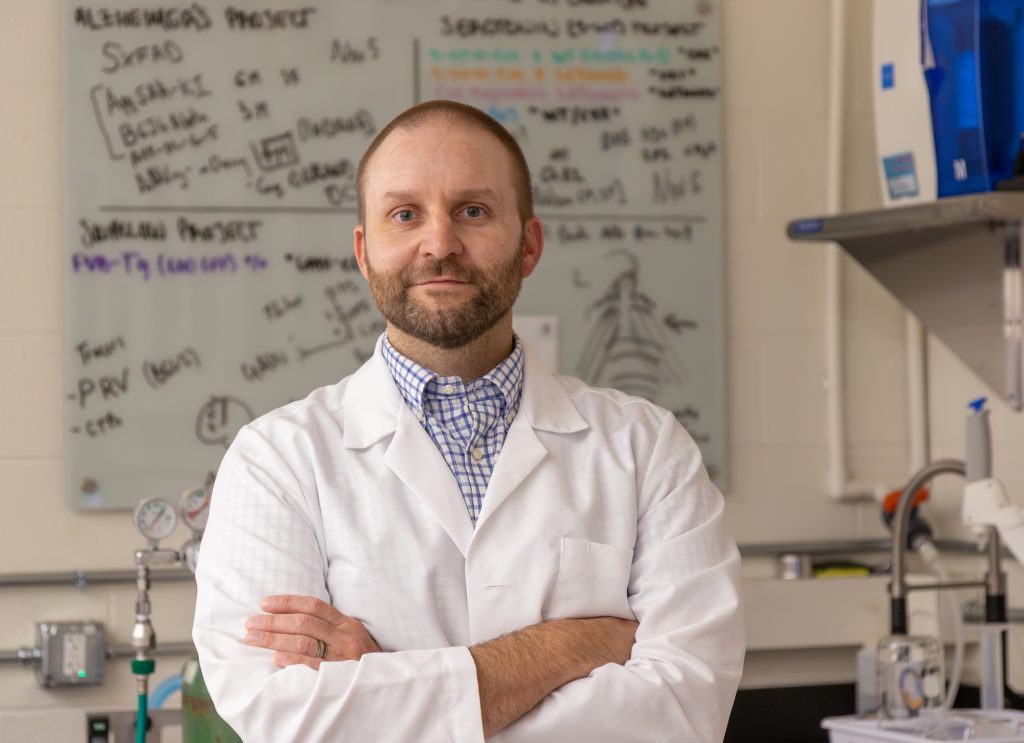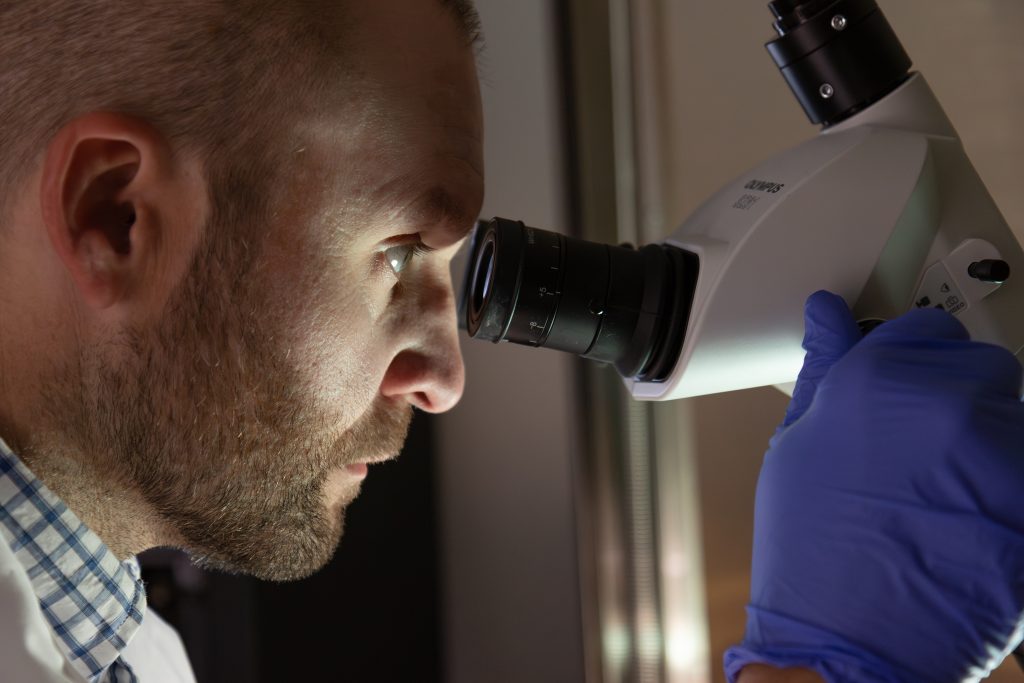Published on
Updated on

Story contact: Nicholas Childress, CVMMarCom@missouri.edu
Photos by Karen Clifford
As an undergraduate student, Jeffery Boychuk, PhD, became fascinated by how the brain makes sense of the world. Cognitive psychology drew him in; especially the way the mind organizes sensory information for decision making.
That curiosity led him to neuroscience. There, he learned neurons act like tiny electrical circuits — with predictable patterns of wiring behind movement, memory and behavior. For almost two decades, Boychuk has devoted his career to understanding how these circuits work, why they fail and how they can be repaired after brain injury.
Focusing on stroke recovery and beyond
Boychuk has spent most of his career focusing on how the motor cortex part of the brain adapts after stroke. He joined the University of Missouri College of Veterinary Medicine as an assistant professor in 2023.
“Stroke is a major health challenge and one of the leading causes of long-term disability,” Boychuk said. “Survivors are often left with challenges in movement, speech or cognition. We want to know how to encourage beneficial changes to brain signaling so patients can recover as much function as possible.”
Boychuk’s research centers on motor control, examining how the brain, brainstem and spinal cord coordinate skeletal muscles for voluntary movements, like lifting an arm, and more involuntary actions, like swallowing. When a stroke disrupts these networks, the impact can be life changing for patients and their families.

To address this, Boychuk investigates ways to help the brain reconnect and strengthen its circuitry; forming new pathways that restore lost function. His work focuses on electrical stimulation and movement training as approaches that prompt neurons to fire in patterns that promote recovery.
“What we’re really trying to do is repair and recover these neuronal circuits, not just in the immediate aftermath, but over the course of months,” Boychuk said. “It’s about pushing the brain to keep healing, even long after the initial injury has happened.”
Boychuk’s team has shown that electrical stimulation therapies are most effective when paired with active rehabilitation, helping the brain activate the right circuits naturally. “One aspect that really bore out of our work is the need to combine neuromodulation with motor rehabilitation,” he said. “We want to activate the correct neural circuits endogenously, using motor training, while providing additional neuromodulatory support to augment their beneficial rewiring.”
Collaboration and inspiration
Advancing these therapies takes more than one lab; it takes a network of collaborators, each bringing unique expertise and perspective. That kind of environment is exactly what Mizzou provides.
“At Mizzou, neurophysiology and neuroscience are real strengths — and they’re being actively encouraged and fostered,” he said. “The access is terrific. It’s unique to have a wealth of basic science, while also having strong clinical application and research through the hospitals, the medical school, the Truman Memorial Veterans’ Hospital and the College of Veterinary Medicine.”
Collaboration is central to Boychuk’s approach. By collaborating across disciplines, Boychuk tests ideas from multiple angles and accelerates discoveries. He says this multidisciplinary environment is what makes Mizzou special. “Our combined expertise drives impactful discovery on campus. The sophistication in technologies has reached a point where team effort is essential,” he said.
Equally important to him are teaching and mentoring. Sharing the same sense of wonder that first pulled him into neuroscience, he finds joy in watching students make new connections.
“Being present with students when something clicks for the first time, when a new idea is born, is one of the most rewarding parts of this career,” he said.
Boychuk believes that one of the most important parts of a faculty member’s role is training the next generation of clinicians and researchers.
From ideas to impact
For Boychuk, research is about more than discovery — it’s about outcomes. By uncovering how the brain heals after stroke, he aims to advance therapies that improve neurorehabilitation for patients worldwide.
“I’ve been a treatment-first researcher my entire career,” he said. “I genuinely want to contribute to treatments that can help people. Even if perfect recovery may be unattainable, improving someone’s life by 70% is still an immense success. What matters is that lives improve.”
That blend of science, medicine and human need drives his work. His ultimate goal is to turn discoveries in the lab into treatments that change lives.
“Knowing that what we do here could one day make a difference for patients and families is what keeps me going,” he said.
By uniting innovation, collaboration and compassion, Mizzou is leading the charge to rewire stroke recovery — one discovery, one patient and one breakthrough at a time.